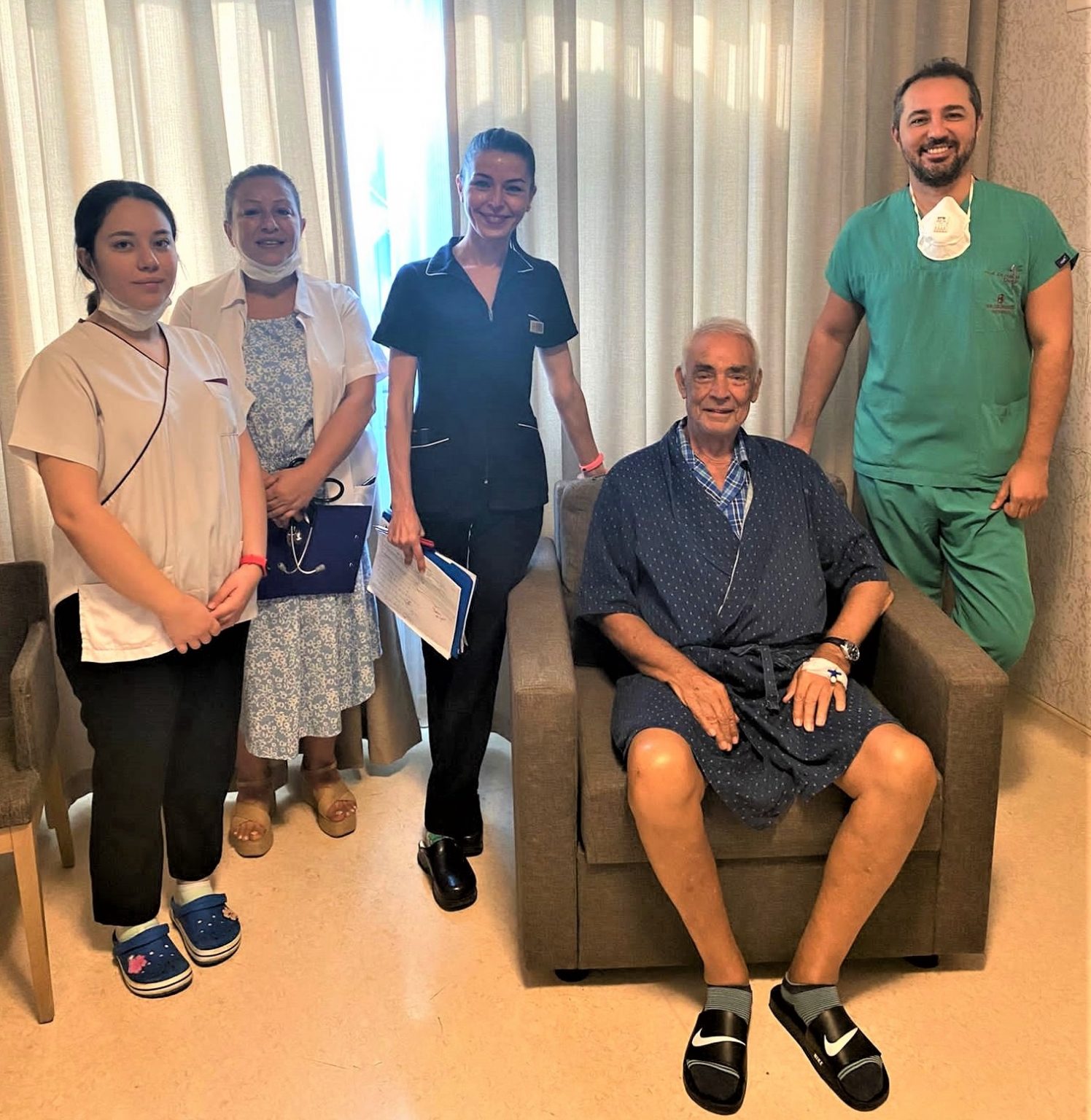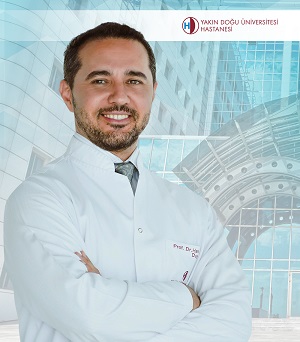
Cardiac rhythm disorders are quite common among the cardiological complaints seen in the older age group. The incidence of atrial fibrillation, which causes irregular and usually rapid heart rhythm, is increasing, especially over the age of 65. The most important difference of atrial fibrillation from other heart rhythm disorders is that it can cause embolism in the brain in patients who cannot use blood thinners. The 83-year-old patient, who lives in our country and has been struggling with this problem for a long time, regained his health with a new treatment method applied at the Near East University Hospital for the first time in the TRNC. The head of the Near East University Hospital Cardiology Department, Prof. Dr. Hamza Duygu and his team first time applied this treatment method in our country with a device called Lambre.
Some cardiac rhythm disorders cause brain embolisms
Cardiac embolism is the most important cause of strokes. Atrial fibrillation, which stands out because of the risks it carries among heart rhythm disorders, causes embolism in the brain in 3 to 5 percent of patients per year. Near East University Hospital Cardiology Department Head Prof. Dr. Hamza Duygu draws attention to the necessity of lifelong use of blood thinners to prevent clot formation in the heart. However, he reminds that it should not be forgotten that blood thinners can cause recurrent stomach and brain bleeding in some patients.
Prof. Dr. Hamza Duygu said the following about the patient, who was treated for atrial fibrillation with a technique applied at a limited number of centers in the world and at the Near East University Hospital for the first time in our country: “When blood thinners were started, our patient experienced stomach bleeding that recurred once or twice a month. The bleeding was sometimes severe enough to require a blood transfusion. In addition, MDS, a type of leukemia, was also detected in the bone marrow. Therefore, the use of blood thinners was definitely inconvenient for our patient. Stopping blood thinners put the patient at risk for embolism.”

In the medical world, which was helpless for such patients until a short time ago, technological developments in recent years are the hope of both doctors and patients.
Prof. Dr. Hamza Duygu pointed out that these developments, which allow to obtain satisfactory results especially in the field of cardiac health, strengthened the hand of the Near East University Hospital cardiology clinic in the treatment of the 83-year-old patient, and explained the treatment method applied to the patient as follows; “A clot occurs due to atrial fibrillation in the appendix, which is similar to the cecum in the heart, and this causes embolism in patients. State-of-the-art devices in the field of cardiology allow the space in the heart to be closed with the umbrella method and the risk of embolism to be eliminated in patients. Thus, the need for the use of blood thinners can be eliminated. As Near East University Hospital Cardiology Clinic, which closely follows the latest technologies, we decided to apply this method in this patient. Thanks to the successful procedure we performed, we restored our patient’s health. Today we are proud and happy of that.”
Prof. Dr. Hamza Duygu; “This procedure, which has been performed in only one patient in Turkey, was successfully performed for the first time in our country at the Near East University Hospital.”
Prof. Dr. Hamza Duygu added that the patient, who was not very compatible with standard closure devices in terms of anatomy, was examined in detail with various tomographic and echocardiographic procedures; “We decided to close this gap with the use of a device called Lambre, which has been applied to only one patient in Turkey until now, and for the first time in our country. Just like angiography, we reached the heart cavity of the patient with an inguinal intervention. With the opening of the umbrella-like Lambre in the heart cavity, we closed the clot-producing structure. Thus, in the next process, we have completely eliminated the risk of clot formation in the heart cavity and then embolism to the brain, spleen, intestine or kidneys. The next day, we woke our patient up and discharged him after 48 hours. Our patient is currently continuing his normal life.”
Prof. Dr. Hamza Duygu; “With this method, we eliminate the need to use blood thinners in patients, and we can prevent fatal bleeding.”
Stating that this method eliminates the need for blood thinners, Prof. Dr. Hamza Duygu emphasized that fatal bleeding due to blood thinners is prevented. “In recent years, it has started to be used in appropriate patient profiles, in appropriate centers, with appropriate devices.” saying Prof. Dr. Hamza Duygu, added that this procedure, which is extremely comfortable in terms of patient comfort, is definitely not an operation, it is performed with an angiographic method, and the patients are discharged within a day or two. Expressing that the patients returned to their normal life after the procedure, Prof. Dr. Hamza Duygu draws attention to the fact that embolism and paralysis are prevented in this way.